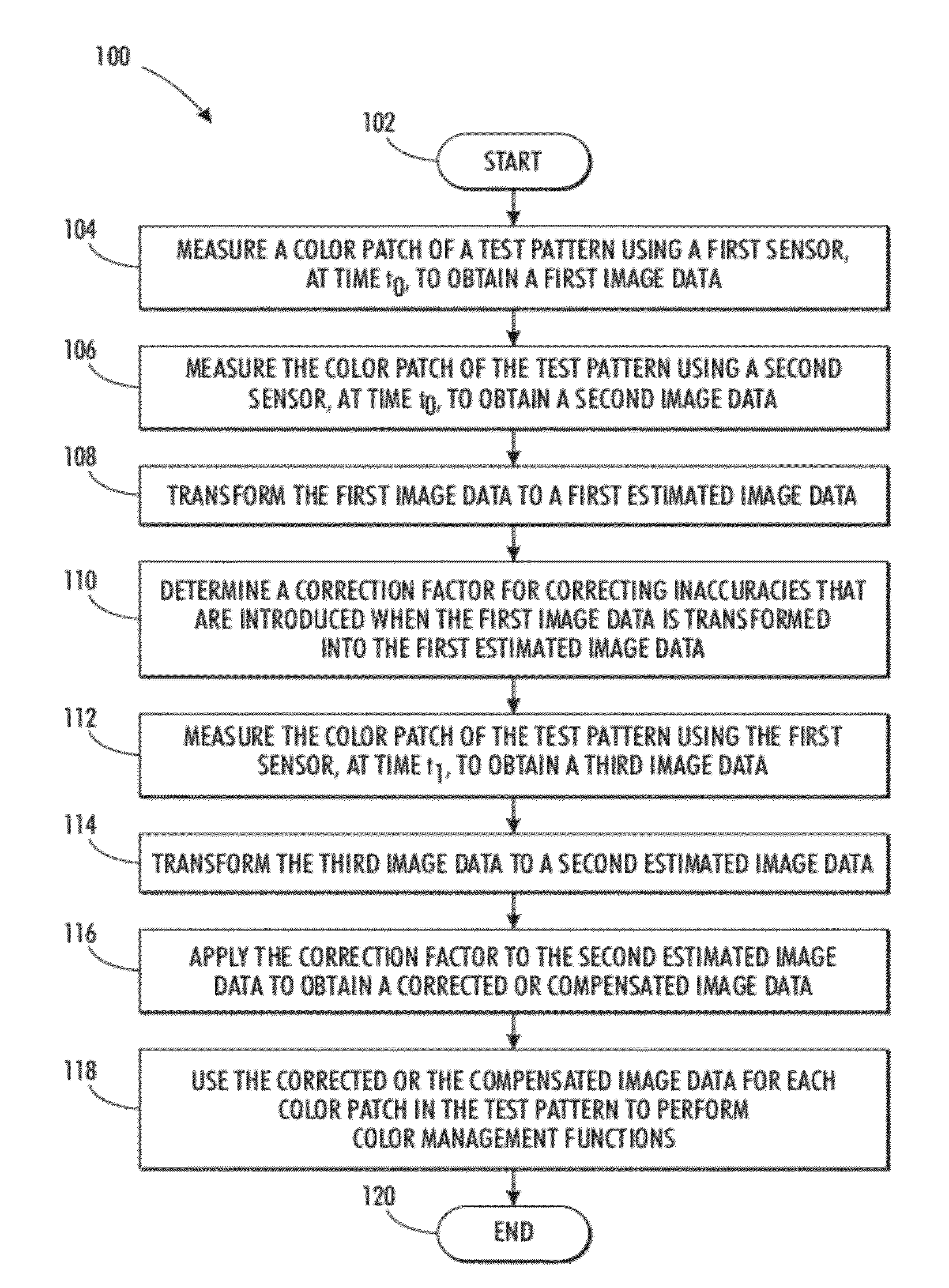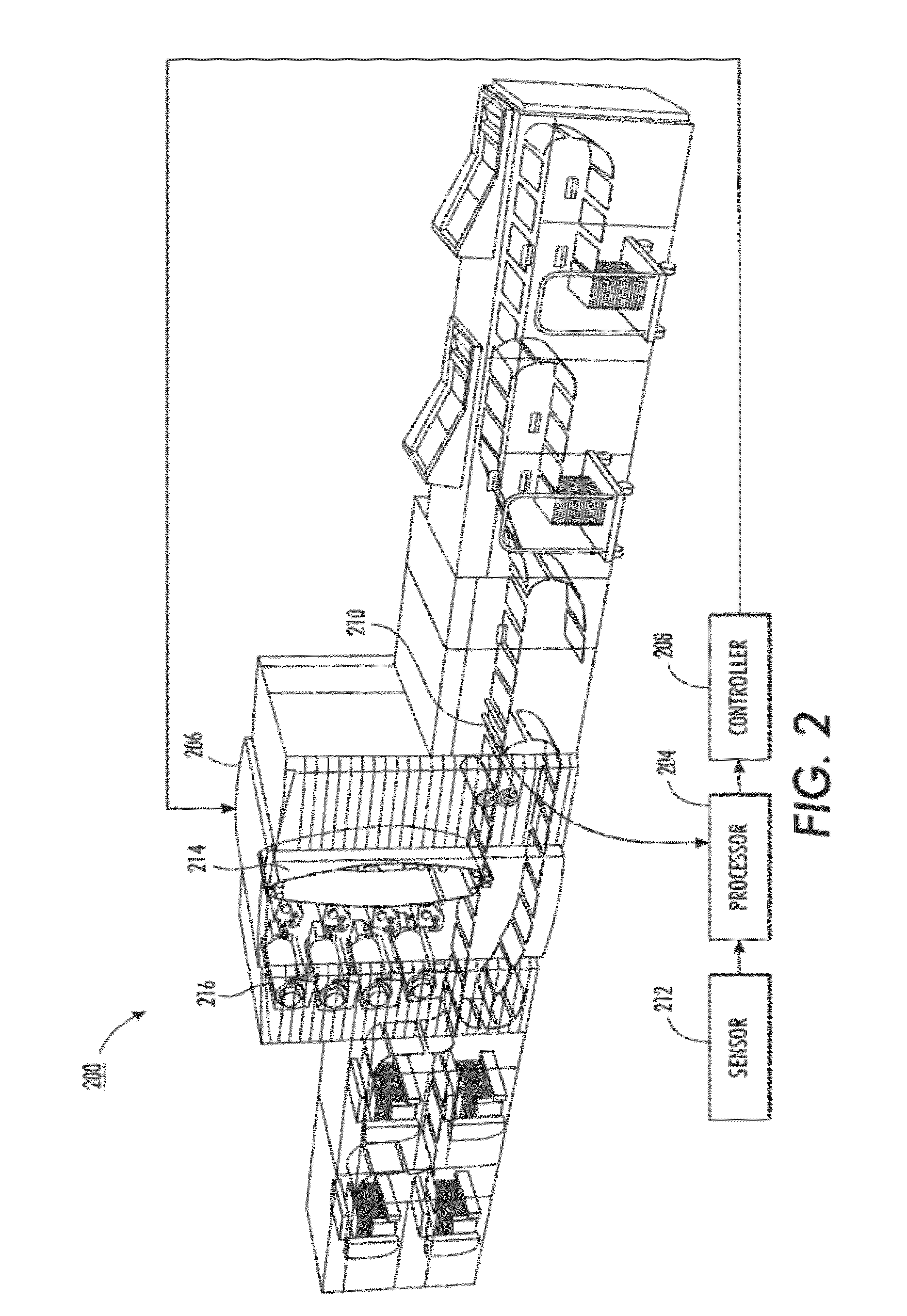Color management and calibration using a scanner or camera
a color management and camera technology, applied in the field of color management and calibration using a scanner or camera, can solve the problems of inability to perform important uniformity measurements, wasting hundreds of pages each time such color management functions are updated, and increasing costs
- Summary
- Abstract
- Description
- Claims
- Application Information
AI Technical Summary
Benefits of technology
Problems solved by technology
Method used
Image
Examples
Embodiment Construction
[0018]An image printing system 200, as shown in FIG. 2, generally has two important directions: a process (or a slow scan) direction and a cross-process (or a fast scan) direction. The direction in which an image bearing surface 214, as shown in FIG. 2, moves is referred to as the process (or the slow scan) direction, and the direction perpendicular to the process (or the slow scan) direction is referred to as the cross-process (or the fast scan) direction.
[0019]The generation of color documents includes an image output step, where the image is printed by a color printer or other image output device. Most color output devices either use cyan, magenta and yellow signals in a CMY color space or in a CMYK with an additional color signal for black. The color signals used for image output devices are also usually device-dependent. Instead of transferring color signals in the RGB space from a scanner directly to color signals in the CMYK space to a color printer, a device-independent colo...
PUM
 Login to View More
Login to View More Abstract
Description
Claims
Application Information
 Login to View More
Login to View More - R&D
- Intellectual Property
- Life Sciences
- Materials
- Tech Scout
- Unparalleled Data Quality
- Higher Quality Content
- 60% Fewer Hallucinations
Browse by: Latest US Patents, China's latest patents, Technical Efficacy Thesaurus, Application Domain, Technology Topic, Popular Technical Reports.
© 2025 PatSnap. All rights reserved.Legal|Privacy policy|Modern Slavery Act Transparency Statement|Sitemap|About US| Contact US: help@patsnap.com



